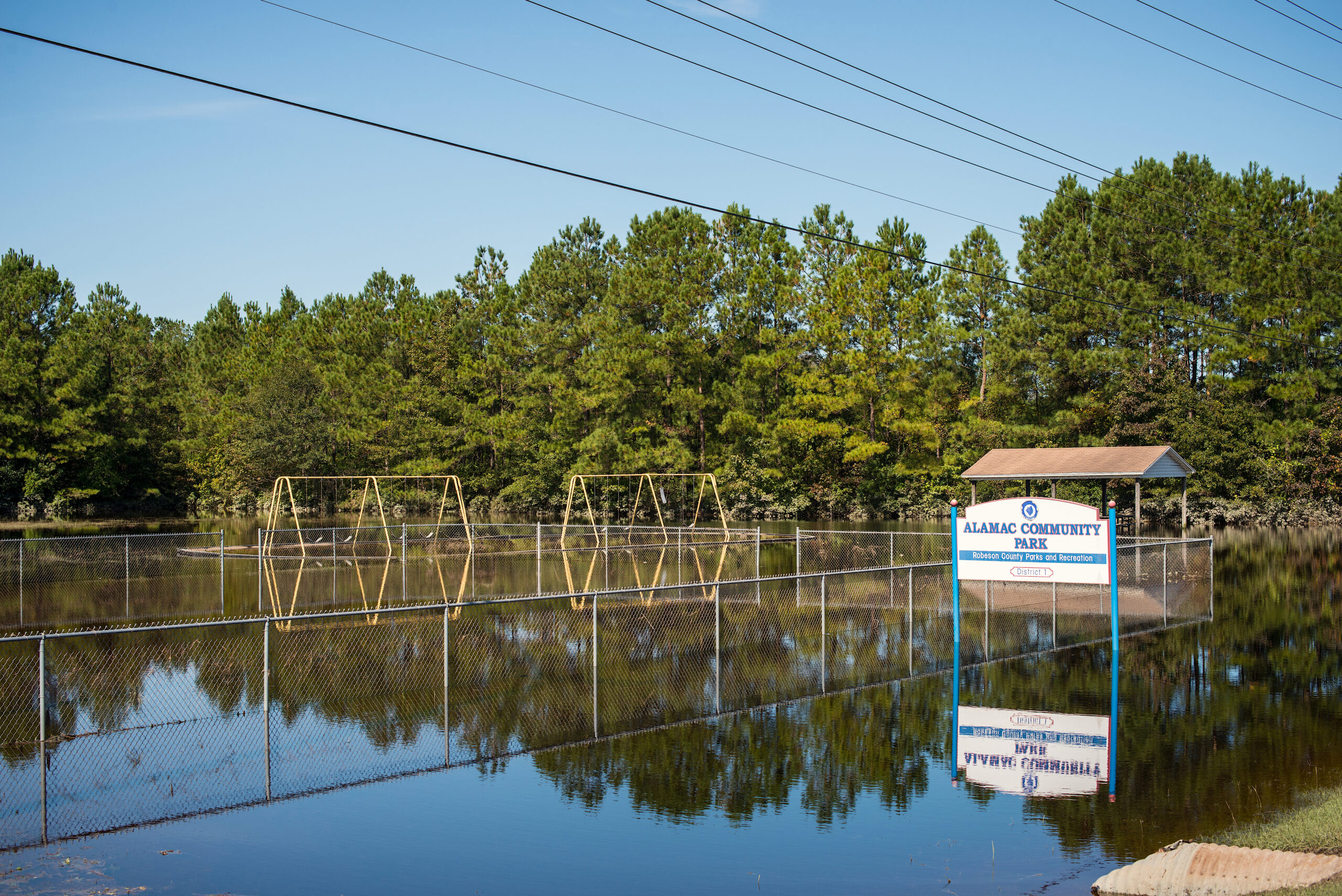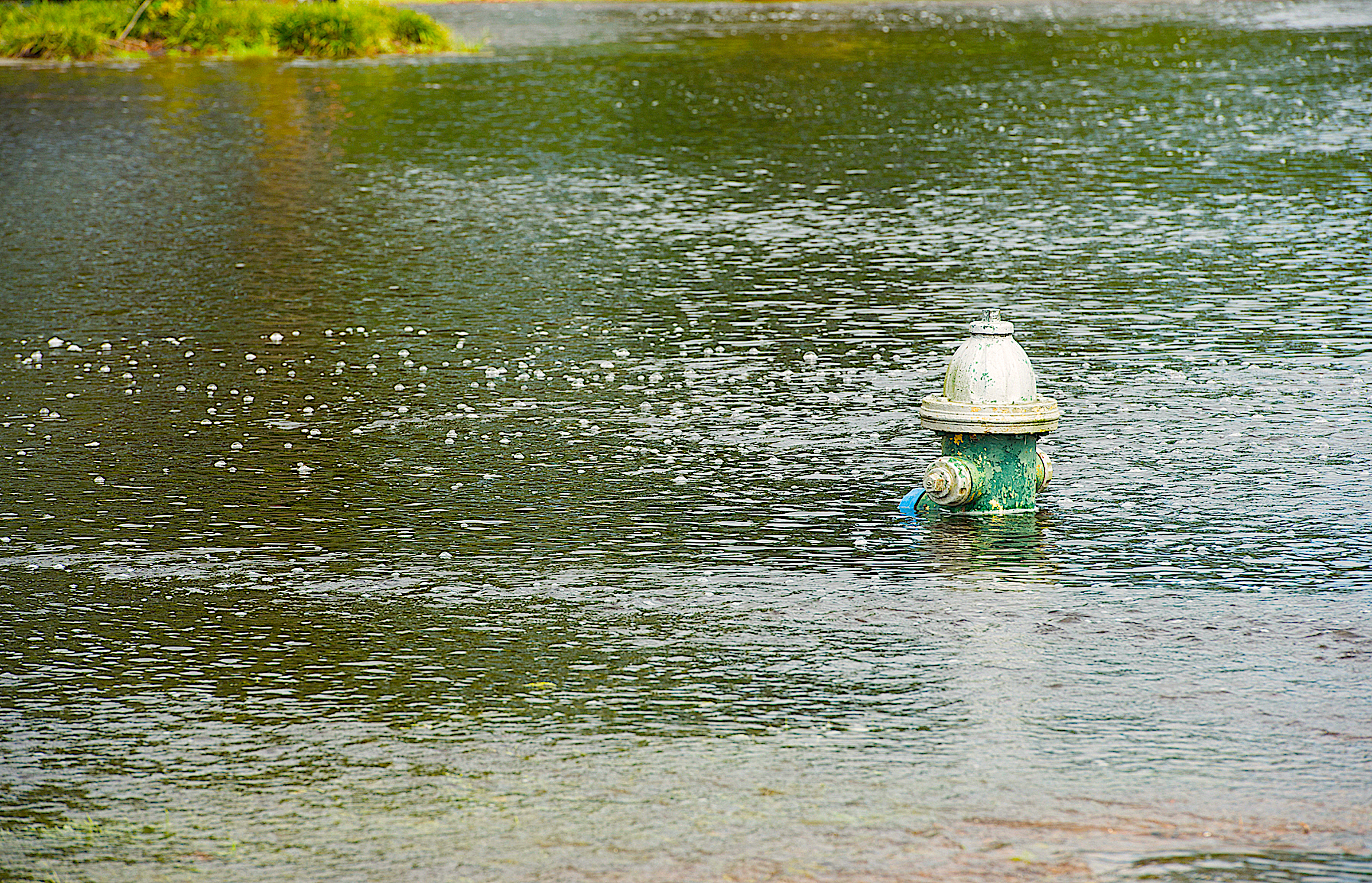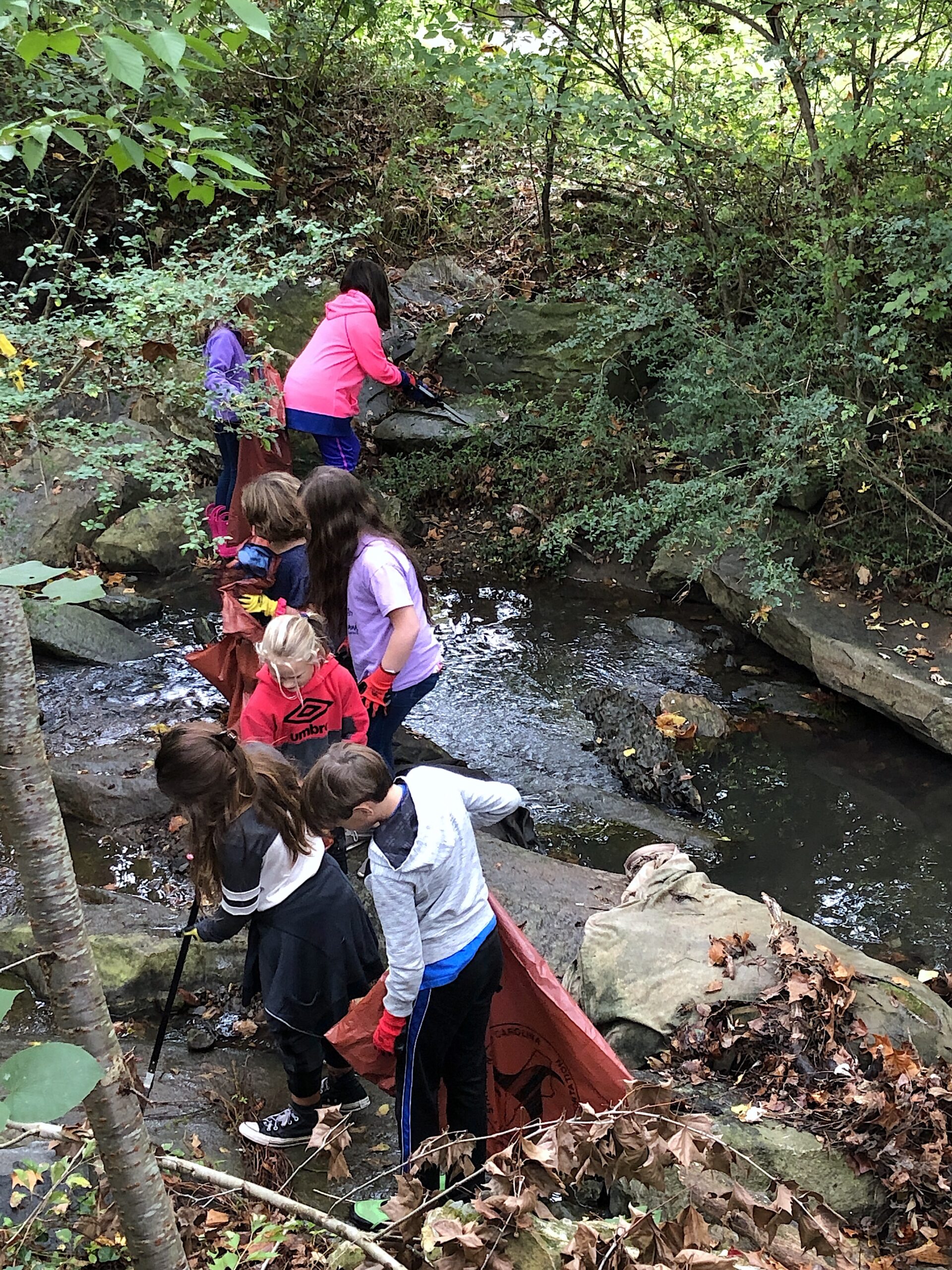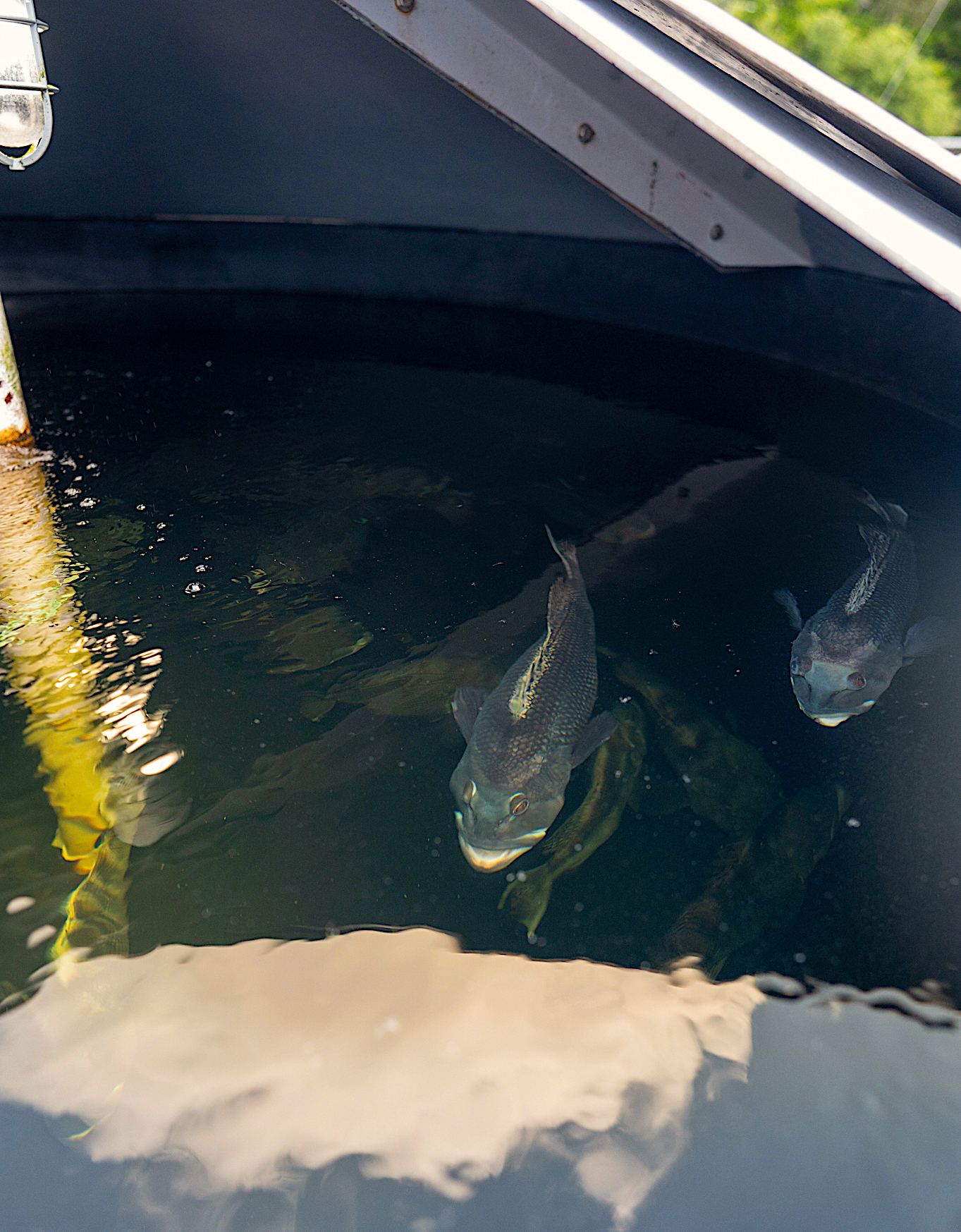Troubled Waters: Flooding, Contaminants, and Heightened Risks
Underserved communities in North Carolina disproportionately experience the adverse effects of flooding and poor water quality. Why is this? And what can we do about it?

Short and long-term effects of flooding can have significant impacts on communities and their public health. Floodwaters can overflow from wastewater treatment plants, sewer manholes and mains, and individual or community septic systems into ball fields, playgrounds, and yards — contaminating buildings and outdoor areas with bacteria and viruses and increasing the likelihood of human exposure.
In North Carolina, perfluoroalkyl and polyfluoroalkyl substances (PFAS), lead, plastics, hog waste, and other contaminants also can impact water quality even without flooding. Under-resourced and underrepresented communities often face these and other contaminants.
The disproportionate effects of flooding and contamination have been the subject of recent and ongoing initiatives at North Carolina Sea Grant. These projects have included extension director Frank López’s work with a traditionally under-resourced neighborhood subject to flooding in New Bern, as well as research addressing how K-12 students in an under-represented coastal community conceptualize disaster compared to adults.
North Carolina Sea Grant also continues to support work from early career and established scientists from traditionally under-represented communities. Projects have addressed causes of under-representation of Latino and Latina community voices after coastal flooding, and, among several other initiatives, how academic and Traditional Ecological Knowledge practices together can evaluate soil and water health in the Waccamaw Siouan communities in the southeastern part of the state.
Much more work has addressed the impacts of flooding and contaminants on vulnerable communities — including the first three projects below. A fourth project shows how children and young adults are becoming more curious and eager to learn about science and the environment, which provides valuable opportunities for long-term solutions that address flooding and water quality.

RACE, INCOME, AND THE BLOOD LEVELS OF LEAD IN CHILDREN
Even with passage of the EPA’s Safe Drinking Water Act in 1974 and subsequent amendments to it, many people — particularly in low-income and underrepresented minority communities — continue to battle contaminated water sources. In fact, EPA data from 2016 to 2019 reveals that public water systems that consistently violate the Safe Drinking Water Act are 40% more likely to serve people of color.
Lead is one of the most common environmental contaminants, and even in small amounts it can be harmful to human health. In fact, a recent long-term study from researchers at Duke University estimated the impacts of lead exposure on IQ points, finding that exposure to car exhaust from leaded gas during childhood stole a collective 824 million IQ points from more than 170 million Americans alive today, which is about half the population of the United States.
Exposure comes in several forms, says Riley Mulhern, who received his Ph.D. from the Gillings School of Global Public Health at the University of North Carolina at Chapel Hill.
“Lower-income housing can have more lead-based paint and can potentially have older lead pipes,” Mulhern explains. “The housing is usually located in areas with historical contamination — for example, construction or soils with lead.”
Mulhern lived in Bolivia for two years to help indigenous communities who wanted information about how contamination from mining operations was affecting their water. The experience led Mulhern to work with private well users in our state in areas where lead, perfluoroalkyl and polyfluoroalkyl substances (PFAS), and flooding potentially impact drinking water.
In particular, as a joint graduate research fellow with North Carolina Sea Grant and the Water Resources Research Institute, Mulhern analyzed datasets that paired race, socioeconomic status, and characteristics of water utility infrastructure with blood lead levels in children.
Although the primary goal of the analysis was to understand how the characteristics of a community’s water system affect lead exposure, Mulhern and his team found greater risk of elevated lead levels in children from low-income and predominantly African-American neighborhoods.
“The most important things were race and economic status,” Mulhern says. “We found the same pattern that’s been found elsewhere around this same issue of these overlapping risks of lead contamination in Black communities and low-income areas.”
As a research environmental engineer with RTI International, Mulhern currently is working on analyzing lead risks using open-source methods to make the work more accessible to other researchers. He also continues his important work with private well owners in Robeson County, one of the lowest income counties in the state and home to many members of the Lumbee Tribe.
“Drinking water quality and water provision is a public service, and there are some people who are stressing about it every single day,” Mulhern says. “We need to care about these types of analyses and doing this type of work, because it informs how we design our urban systems, our world, and our society.”

THE COLOR LINE, THE WATER LINE, AND GREEN INFRASTRUCTURE
Nuisance flooding — low levels of flooding that do not pose significant threats to public safety but can strain infrastructure and cause property damage — and catastrophic flooding from high precipitation weather events combine to impact coastal and inland low income and underrepresented communities.
According to a United Kingdom study published in the National Library of Medicine, people who live in high frequency flood areas continuously experience health-related problems from emotional grief to death, as well as other long-term psychosocial effects like distress, anxiety, and depression.
For people experiencing frequent flooding, outsiders sometimes offer suggestions, like moving to higher ground or out of the area altogether. However, for neighborhoods with historic roots and with less influence on local decision-making, moving is easier said than done.
In the Walnut Creek Watershed, residents of Rochester Heights, the first subdivision for African Americans in Raleigh, experienced catastrophic flooding events from hurricanes Fran in 1996 and Floyd in 1999. The
community remains vulnerable, due to poorly draining land cover and proximity to wetlands, and residents continue to battle nuisance flooding.
“There was a color line in Raleigh, and the Black community was moved behind that color line into the lowest part of the city, which would become frequently flooded,” explains Louie Rivers, a specialist in environmental justice and science policy at North Carolina State University and with the EPA. “Rochester Heights is the oldest Black community here, and it is always known to flood.”
Rivers works alongside the Walnut Creek Wetland Community Partnership and Partners for Environmental Justice with Christy Perrin, sustainable waters and communities coordinator for North Carolina Sea Grant and the Water Resources Research Institute. Ryan Emanuel, an environmental scientist and community-engaged scholar at Duke University, is also a key collaborator.
“There are so many efforts that partners are involved in,” says Perrin. “For example, we have been working to implement green stormwater infrastructure to reduce stormwater runoff, as well as collaborating with The Conservation Fund to identify, design, and construct nature park facilities on the south side of Walnut Creek that equitably support community interests.”

St. Ambrose Episcopal Church, a landmark of the community, hosted and incorporated one such green infrastructure project — a demonstration rain garden that slows water runoff while filtering its pollutants. Projects like these, participants hope, offer the first of many practical solutions.
With the EPA, Rivers also focuses on developing science that supports the agency’s regulatory work, as well as other environmental agencies’.
“We have a duty to our citizens to have equal protection and equal access to the environment,” he says. “The issues that we see in environmental justice communities,” where, for instance, people in communities like Rochester Heights suffer the effects of flooding disproportionately, “will eventually show up in more affluent communities five or six years down the road. We should care about these issues now.”

HOG FARMS, HISTORY, AND UNTOLD CONSEQUENCES
Although many people consider the Midwest the traditional home for hogs, North Carolina went from the fifteenthranked state to second in hog production from the mid1980s to mid-1990s. This growth included the emergence of thousands of concentrated animal feeding operations, also known as CAFOs.
These industrial-scale farms house thousands of animals whose waste periodically supplies “spray fields” — which can contain dangerous pathogens and antibiotic-resistant bacteria that eventually affects drinking water sources. Emissions from CAFOs also can contribute to respiratory infections and elevated blood pressure. (For more on the impacts of CAFOs, see Andrew Moore’s “Natural Solutions and a Clean Water Future for the Cape Fear” in this issue.)
Many CAFOs are located in the eastern half of the state, part of what colloquially is known as the Black Belt. The area once included the sites of many plantations, and freed slaves continued to farm and sharecrop in eastern North Carolina after emancipation.
According to a study on CAFOs published in Environmental Health Perspectives, many Black residents who reside in the region today, a century and a half later, are experiencing higher rates of poor health from CAFO emissions, which are contributing to mucosal irritation, respiratory ailments, and elevated blood pressure. Therefore, learning about emerging techniques that we can use to understand water quality and other environmental and health impacts on communities from CAFOs is essential.
Lise Montefiore, a former joint research fellow with North Carolina Sea Grant and the Water Resources Research Institute, reconstructed the growth of swine CAFO waste lagoons since 1987 (below).

“I was thrilled by this idea because I wanted to use satellite images,” explains Montefiore, who earned her Ph.D. at NC State in biological and agricultural engineering. “I wanted to connect this idea to water quality. After conducting some research, it was clear that farm locations and their year of construction were critical and needed information to understand the potential connection between historical swine CAFOs growth and long-term water quality trends.”
Montefiore and NC State’s Natalie Nelson, her advisor, developed a dataset that reports the time of construction of swine waste lagoons in North Carolina. The use of the dataset can inform management practices and shed light on environmental and public health trends in the Coastal Plain of North Carolina. For example, watersheds with a history of extensive animal production over several decades likely possess large legacy stores of nutrients from waste, which, in turn, can mask the effects of current management practices. This, in turn, could discourage water quality management and policies that actually would benefit underresourced communities in the end.
As a postdoctoral researcher with NC State, Montefiore now works with a team of researchers in Florida and North Carolina. The team uses modeling approaches to understand the interactive effects of lake level management on downstream water quality.
Montefiore says a retrospective look at how people have used the environment is essential. “Historical data are needed to accurately understand how changes in the agricultural landscape may be related to long-term consequences on natural resources and adjacent communities.”

PLASTIC, PFAS, AND A RISING GENERATION OF ENGAGEMENT
“I was in high school when I wrote my senior paper on wanting to be a teacher,” explains Jenna Hartley, environmental educator and post-doctoral researcher at the University of North Carolina at Chapel Hill. “After completing my masters in education while teaching in New York City, I moved back to North Carolina and taught AP Environmental Science. I saw kids connecting to environmental science, especially about how they could make a difference.”
Hartley served as a high school science teacher for seven years and as a fellow at the EPA for six years before and while pursuing her Ph.D. in parks, recreation, and tourism management at NC State. Under the guidance of NC State’s Kathryn Stevenson, Hartley’s marine debris environmental education research, which North Carolina Sea Grant has supported, involved studying the impacts of hands-on, in-person, experiential education activities.
“The Duke University Marine Lab developed this incredible curriculum for 4th and 5th graders on marine debris, and it was really interdisciplinary,” she says. “The kids made art and wrote haikus and plays, but at the same time, they were learning about the science of plastics.”
Almost 40 North Carolina counties were involved in the initiative, and at many of the schools all students were on free or reduced lunch. Teachers at schools in Wilmington would explain how none of their students had ever stepped foot in the sand, because even cheap beach accessibility (e.g., “only” paying to park) is something that many families couldn’t afford.
Hartley applied for grants to support field trips for students to waterways. These included clean-up activities for an entire 4th grade from a Wake County school at the Eno River State Park and the entire 4th and 5th grades from a Brunswick County school at the beach.
“Hands-on experiences like these empower kids and show them they can be a part of the solution and be impactful now,” she says. “They don’t have to wait until they’re 18, or until they have a job.”
Now as a postdoctoral researcher at the UNC Institute for the Environment, Hartley works with principal investigators Kathleen Gray and Dana Haine on Iterative Design to Engage All Learners, a National Institutes of Health project that supports teachers and scientists in co-creating lessons about perfluoroalkyl and polyfluoroalkyl substances (PFAS). Studies have linked PFAS to a variety of health effects, including decreased fertility, low birth weight, and increased risk of some cancers, among others.
Participating teachers, who are all from PFAS-impacted communities (such as Greensboro, Fayetteville, and Wilmington) and under-resourced schools, are learning about PFAS and inclusive teaching strategies for the classroom.
Hartley says that for youth in under-resourced and underserved communities, pollutants are especially important to understand — because these students are more likely to bear the adverse effects.
“The sooner we can help build scientific literacy on these important topics, the better,” Hartley says. “These public health and environmental challenges that are facing North Carolina communities require scientifically literate responses. Informed and engaged residents will be better positioned to address the public health and environmental challenges facing their communities. Giving our students curricula that is real-time, local, and relevant can increase their interest, benefiting both them and the communities where they live.”
READ MORE
- Frank López and resilient housing for New Bern
- Riley Mulhern and lead contamination
- Louie Rivers and flooding in environmental justice communities
- Christy Perrin and Walnut Creek community projects
- Lise Montefiore and hog farms
- Jenna Hartley and environmental education
- North Carolina Sea Grant — Water Resources Research Institute Graduate Research Fellowship
Lauren D. Pharr is an award-winning science communicator with North Carolina Sea Grant, contributing editor for Coastwatch, Ph.D. student at NC State University, and 2021-2022 Global Change Fellow with the Southeast Climate Adaptation Science Center.
- Categories:


